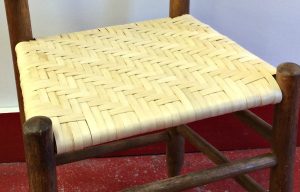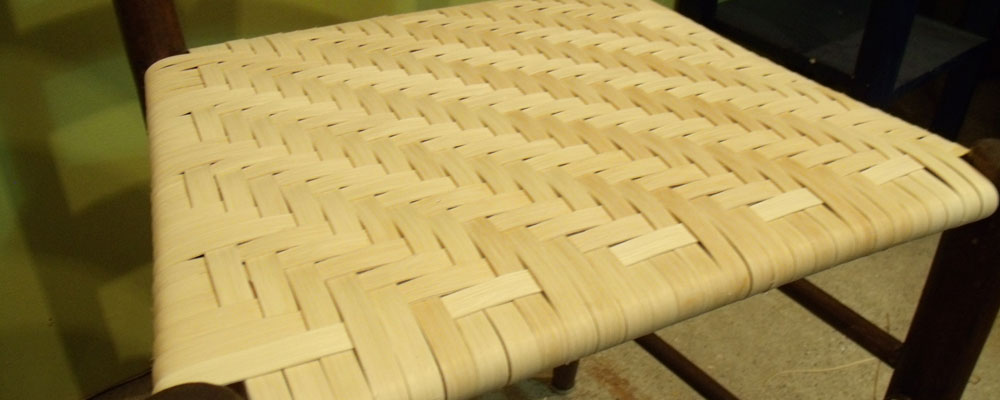
Learn to weave a chair seat with rattan splint reed in a herringbone twill pattern.
Learn to weave with splint reed in a herringbone twill pattern.
General: This style of caning is also called “split weaving” because the authentic material was split off of the bark of a tree (usually hickory or oak).
Materials and patterns can vary from chair to chair. Here is a breakdown:
- The most affordable, common, and simple way to weave a splint seat is with flat rattan reed in a herringbone pattern (seen in photo above). Any chair with four rails can be repaired with this technique.
- Authentic bark is harvested in early summer and is extremely labor intensive. It is available seasonally, more time consuming to weave and more expensive to purchase, if available at all. A herringbone pattern is the most common pattern. Any chair with four rails can be repaired with this technique.
- Binder cane is a rounded rattan reed with a natural silica coating often seen on large porch rocking chairs and mid-century chairs. Binder cane is lovely but takes twice as long to weave as splint reed, being half the size, and typically can’t be woven in a day as a beginner. Common pattern include the “open weave” seen on Old Hickory Furniture, porch weave, and herringbone. Any chair with four rails can be repaired with this technique.






